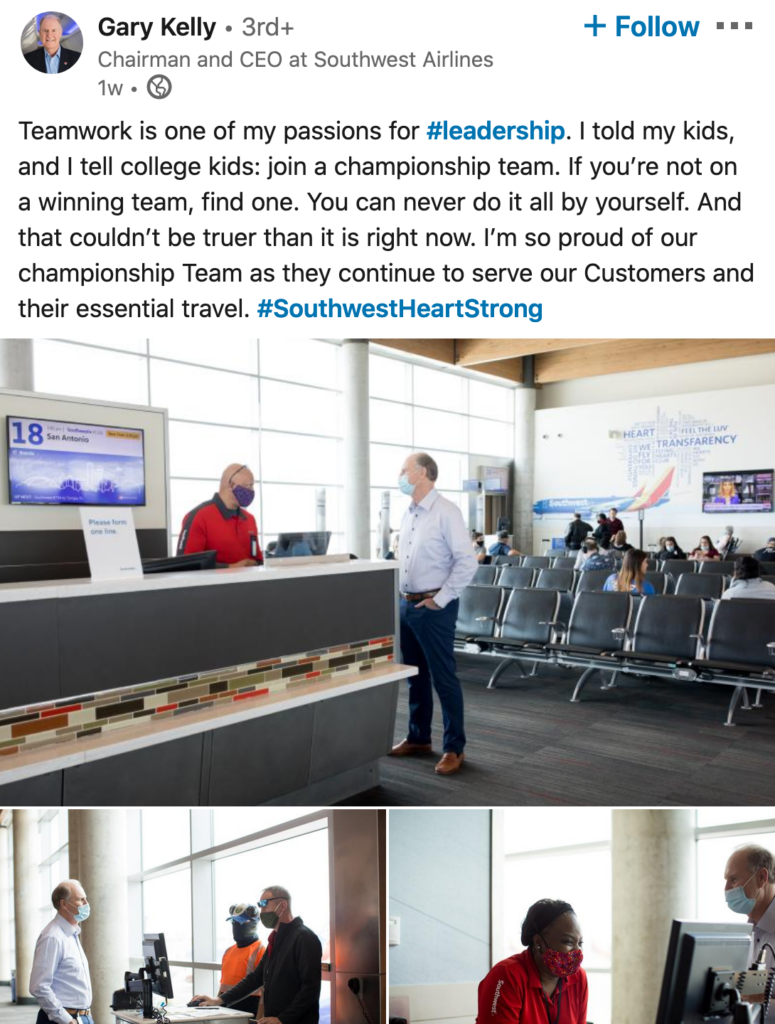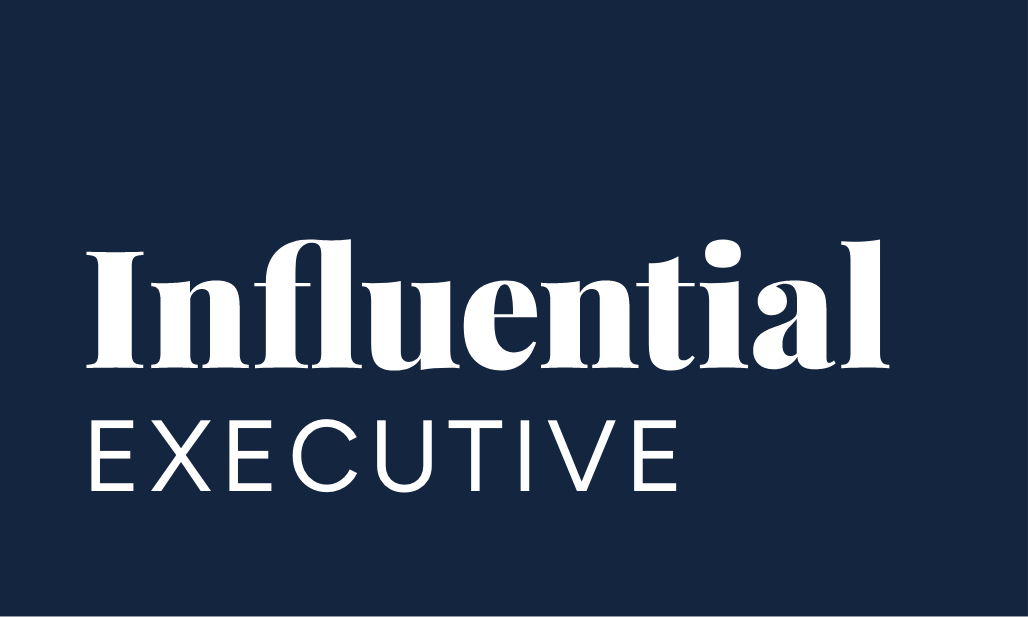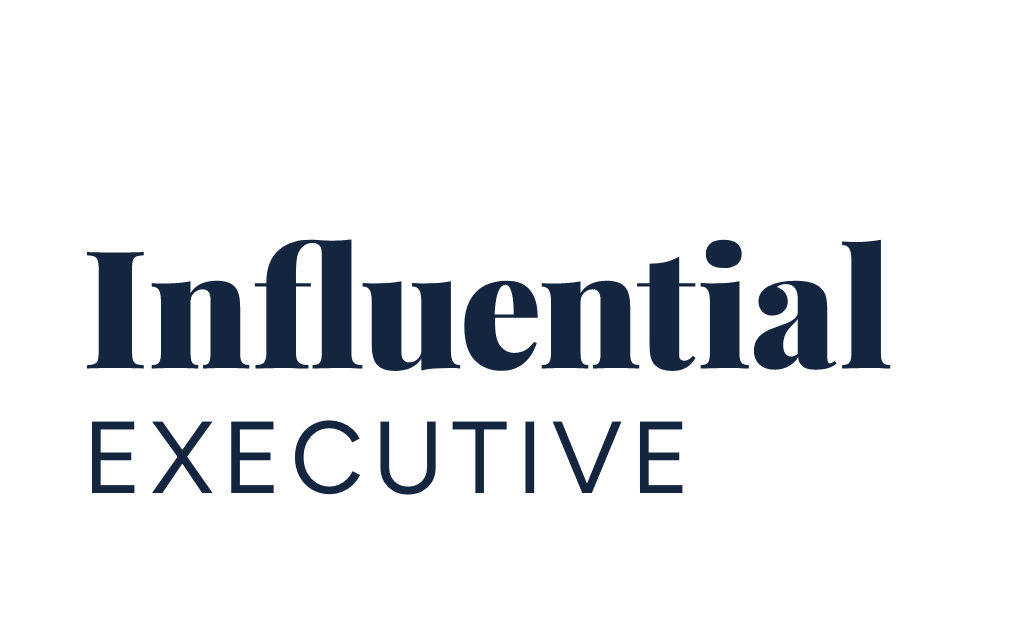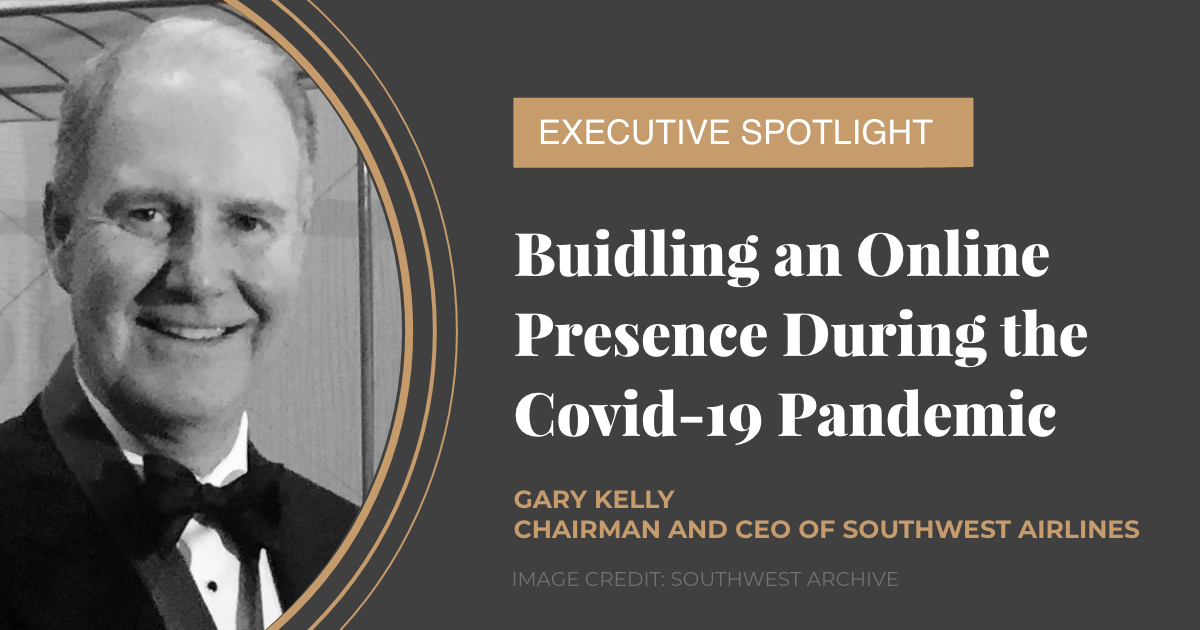As companies around the world continue to deal with the COVID-19 pandemic, more CEOs and business leaders are adopting online platforms to establish their thought leadership strategy and online presence. Some executives are looking to social media marketing agencies to assist in creating and scheduling content, while other business founders and their in-house marketing team are partnering with third-party agencies to get their expertise on personal branding.
In this Executive Spotlight, we will be looking at Gary Kelly’s LinkedIn and Twitter accounts. As the chairman and CEO of Southwest Airlines, his company has been greatly impacted by the coronavirus and governments setting restrictions on travel. As we will discuss in this article, Kelly has used his online presence to promote a sense of optimism by focusing on positive company initiatives.
LinkedIn: an Emerging Social Media Strategy
First, let us look at Kelly’s LinkedIn social media profile. He only recently became more active on LinkedIn, posting a few times per week. Before the pandemic, Kelly posted once every few months. We will talk about setting an optimal social media posting schedule in a later section, but ideally, executives who use social media should set a more consistent schedule. However, it is good to see that Kelly has been returning to LinkedIn often to make official announcements and post other brand-related content.
During the COVID-19 pandemic, the general public is expecting to be kept updated on what is happening at a business. We have seen many executives use social media to discuss their company’s actions, such as adopting new measures to reduce the risk of exposure. In Kelly’s case, he is effectively highlighting the additional steps Southwest employees are taking to protect their customers.
One of the reasons why Kelly’s LinkedIn content is so effective is that he uses original photography in his posts. We have seen that certain content resonates more with social media users, making it more effective when posted by an individual rather than a brand account. Kelly’s photographs are high-quality and have a professional finish. They often feature individuals, making it even more relatable to social media users.
Throughout Kelly’s LinkedIn feed, he promotes positive stories that often use a congratulatory tone, whether it is thanking brand partners or their employees. During the COVID-19 where social media has become a hotbed of both positive and negative news, Kelly has maintained a very specific tone that uplifts his business’ branding.

[Source]
Another reason why Kelly’s personal branding on LinkedIn is effective is the way he weaves in his company without explicitly mentioning it in the copy. By using a branded hashtag and including authentic photos, he is able to share stories about his brand without sounding overly promotional. One social media strategy we recommend for executives during this time is to pay attention to how they are using company tags or mentions. Crisis management strategies often require a different approach, such as limiting discussion on product promotion, while pivoting to brand awareness.
Kelly has also used video content very effectively, whether it is to show off his more humorous side, or to address the viewer directly during the COVID-19 pandemic. His post below is effective for a number of reasons. First, by directly looking into the camera he is making a stronger emotional connection with the viewer. Second, the inclusion of subtitles means the content is accessible to more users, including those who are hard of hearing or deaf. Lastly, it shows that Kelly and his company are being proactive about the situation.
Video content represents a key opportunity for executives to connect with their social media followers in a more authentic way. To learn more, read our guide, How Executives Can Use Video on Social Media.
Interestingly, on Kelly’s main profile page, he has used the Featured section to link to some of his posts, effectively boosting their visibility. This highlights important posts he wants to share with other social media users who may just be visiting his main page. In general, we often suggest that executives use the Featured section like a portfolio to showcase their projects or their company’s work. If an executive has no content they want to feature, adopting Kelly’s method is one way to promote their in-feed content.
Twitter: Using Social Media as a Reputation Management Tool
Next, we will analyze Kelly’s Twitter account, where he is more active. Right from the start, he makes it clear that the focus on his Twitter content will be on Southwest Airlines employees, stating, “People are our greatest asset. I highlight them here.” He has included relevant brand-related content by including a link to Southwest’s website and tagging @SouthwestAir. While it may seem like a minor part of the overall Twitter bio, including handles and links are important as it establishes a relationship between the executive and their company. It is effective in building brand awareness and can help drive website traffic. Lastly, Kelly also uses his Twitter bio to include personal content with his “Hook ‘em, Horns!” slogan, referencing The University of Texas at Austin.
With just under 8,400 followers, Kelly has been posting relatively consistently over the past month, although we do have suggestions for improvements that we will discuss in a later section. Similar to his LinkedIn content, his Twitter feed focuses on promoting positive news about Southwest Airlines.
Our Employees have been receiving a lot of love from our amazing Customers. These notes of encouragement are just the right kind of inspiration we need to stay #SouthwestHeartStrong. pic.twitter.com/wW7km4K0n9
— Gary Kelly (@gary_kelly) May 20, 2020
His Twitter content has garnered praise among other social media users who see Kelly and his company as setting great examples for the airline industry with their consumer-facing focus.
I’ve flown Southwest for 30 years because they understand that “People are always more important than things”. And then SW conducts business with precision, foresight and great good humor. Nothing more needs be said.
— Shane McCamey (@MccameyShane) May 8, 2020
Similar to LinkedIn, Kelly’s Twitter content is effective because he focuses on posting original content and occasionally retweeting key messaging from the main Southwest account. He has posted several multi-tweet posts, making sure to clearly note the number of the Tweet in order for users to follow along.
We find ourselves in the greatest challenge of our generation. We don’t know what the future might bring, but what I do know is the resolve and the resiliency of Southwest Airlines is unmatched and untied. We are all in this fight together.
(5/6)— Gary Kelly (@gary_kelly) March 23, 2020
Kelly has also adapted copy and content to the social media platform he is posting on. For example, this post on LinkedIn features a gallery of images in a single post whereas on Twitter, he posts one image per tweet with different copy. Even the messaging is slightly different, although both are brand-related. Content diversity is an effective way for executives to establish their thought leadership strategy while differentiating themselves from other executives on social media.
Strengths: Effective Crisis Management Through Social Media
During the COVID-19 pandemic, we saw many brands and executives shift their social media strategy to incorporate relevant messaging. In Kelly’s case, he returned to LinkedIn to post content about the current crisis after a long absence while on Twitter, he has maintained an equally professional and empathetic tone.
Another of Kelly’s strengths is his video content, which we discussed earlier. He has made excellent use of video content to convey important information while also promoting his company’s actions. During times of crisis, consumers will be looking at a company’s leadership rather than just the brand’s general social media account. Executives can use their online presence as a form of reputation management by communicating directly with the general public.
On both platforms, Kelly has effectively used branded hashtags, like #SouthwestHeartStrong. Even when he is not tagging Southwest directly, the inclusion of the hashtag is a way to connect his content to his company. When using brand-related hashtags, we recommend executives use no more than one or two at a time and to keep the hashtag(s) consistent.
Lastly, on LinkedIn, he has a large following of almost 180,000 users. What his large follower number implies is that people do want to hear what he has to say, which is another reason why a consistent posting schedule is so important.
Improvements: Maintaining a Consistent Posting Schedule
One of the key social media strategies executives (and brands) must employ is creating a consistent posting schedule. Before the coronavirus pandemic, Kelly posted anywhere from a few times a month to just once every few months, which is not an effective way to develop his online presence. We recommend setting and maintaining a specific posting schedule. For some executives, this could be once every weekday, three times per week, and so on. On Twitter, Kelly is more active but his posting schedule is still sporadic, with only a few posts in February, consistent posting in March, almost no posts in April, and consistent posting in May.
On all social media apps, we recommend executives use best platform practices, including tagging appropriate brands or individuals in their posts. Mentioning other accounts with the @ symbol is one way to broaden the post’s reach. For example, in this post, Kelly could have tagged Deloitte. There are times when an @ symbol has been added but was not turned into a tag when posting, such as in the example below.
While these are minor issues, they do contribute to a better user experience, especially in cases where an executive is sharing a link with the purpose of driving web traffic.
Lastly, here is a topic that does not often come up in our Executive Spotlight articles—follower growth. Follower growth is an important KPI (or key performance indicator) to track on social media. The more followers an executive has on social media, the broader their content’s reach. The extreme contrast between the number of followers and the number of connections Kelly has on LinkedIn is certainly rare—almost 180,000 followers versus just 100 connections. What this implies is that he is either very selective about who he connects with or has not had the time to connect with his professional contacts. Growing connections is one activity executives can engage in to broaden their reach on LinkedIn while being more connected with professionals in their field.
Conclusion: an Online Presence is Key During a Crisis
During times of crisis, executives that are not on social media may find themselves at a disadvantage when trying to connect to their consumers. While social media represents a powerful marketing tool for executives, it is important to keep in mind that it is a communication tool first and should be utilized effectively. Gary Kelly’s social media content works to create a more positive brand image for Southwest, while also maintaining a consumer-focused approach.
Not many digital marketing agencies focus primarily on executives—we do. From content creation and scheduling to analytics and strategy development, click the button below to book your consultation to discuss which executive social media plan is right for you.
href="#" data-color-override="false" data-hover-color-override="false" data-hover-text-color-override="#fff">Book your consultation with our social media experts!


